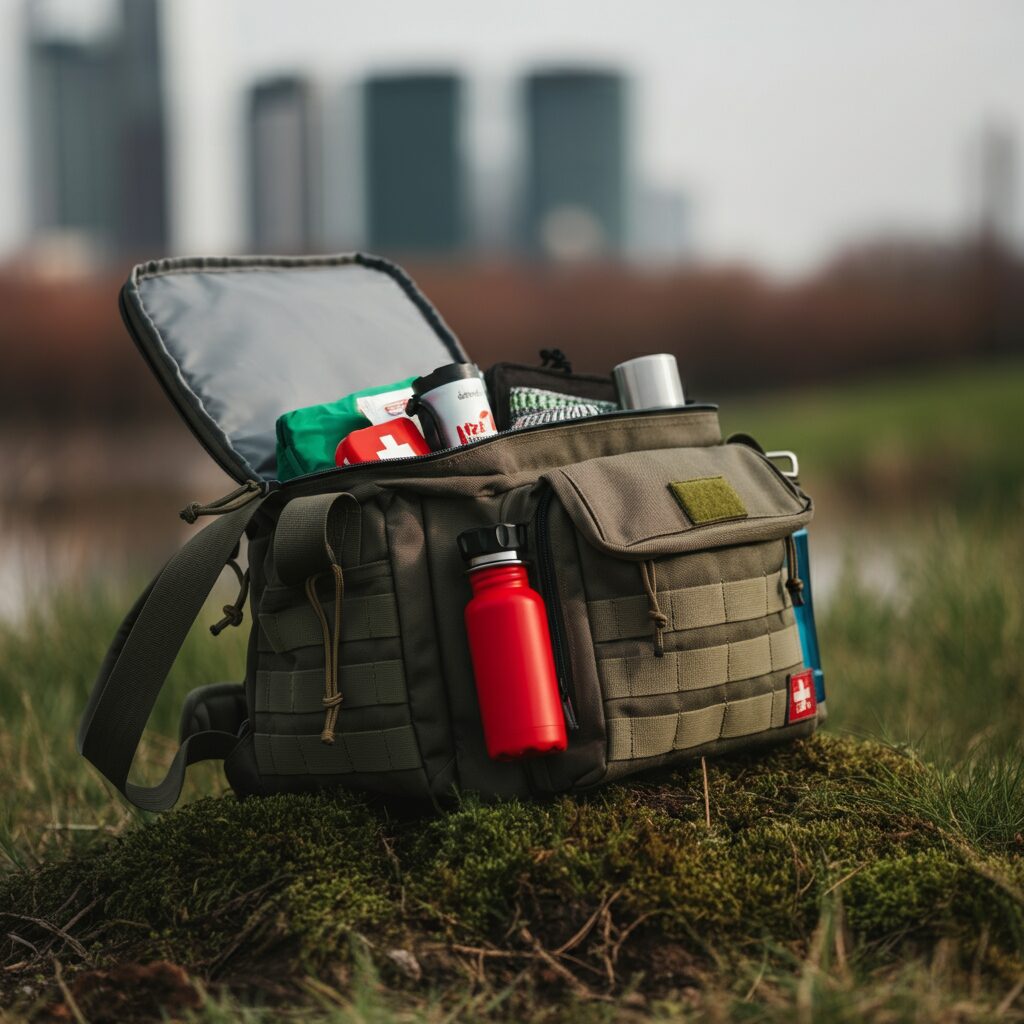Disclaimer: Although we base all of our reviews on both our product testing and that of other customer reviews. That being said, this website contains affiliate links for products we talk about. You don’t pay any more for any products you purchase by clicking on links but we might receive a small commission for our recommendation to those products we link to.
Do you leave your home for work, errands, or social activities? If yes, then having a Get Home Bag (GHB) is essential. A GHB contains emergency essentials that enable you to get from wherever you’re stranded to the safety of your home. Whether you’re stuck at work, the grocery store, or a dentist appointment, your GHB is a lifeline.
While you might have heard of a Bug-Out Bag (BOB)—designed to provide at least three days of supplies for reaching a bug-out location—a GHB is smaller, typically catering to shorter durations (24–48 hours).
It’s not just a survival tool; it can also be a comfort-focused kit, ensuring safer and easier commutes during challenging situations.
Why You Really Need a Get Home Bag
A GHB isn’t just for extreme scenarios like “the end of the world as we know it” (TEOTWAWKI). Everyday circumstances can demand its use.
Here are practical examples:
- Weather-Related Emergencies: I once lived in Portland, Oregon, where rare snowfalls often turned Highway 26 into a parking lot. Stranded commuters sometimes had no choice but to walk. A GHB would have eased their hassle.
- Seasonal Adjustments: Your kit needs to adapt based on the season. For example, in Wyoming’s frigid winters, warmth takes precedence, while sun and bug protection become priorities in the summer.
- Location-Specific Needs: Wyoming’s vast distances mean my bag isn’t a typical 24-hour kit. Grocery runs alone are a 30-minute drive one way. Walking home could take nearly two days with ideal conditions. Your GHB’s contents must match your climate, typical routes, and unique circumstances.
Everyday and Complementary Use
Pair your GHB with your Everyday Carry (EDC). Items in your EDC (wallet, flashlight, or pocket knife) supplement your bag, ensuring you’re always prepared for unexpected challenges.
Choosing the Right Bag for Your GHB
A suitable bag is vital. Here’s how to pick one:
- Size and Style: Compact backpacks with multiple compartments are ideal. They don’t take up too much room in your vehicle, and they hold just enough supplies for short-term needs. My first GHB used an old school backpack, proving you can start with what you have.
- Lifestyle Consideration: Will you need multiple bags? Many people keep one GHB in their car and others at work or for family members. Think about whether your kids need one at school or if a family bag suits your situation.
- Special Activities: For example, my ski-days setup includes one large essentials bag with foldable day packs for easy redistribution.
The Golden Rule of Weight
One of the biggest mistakes in assembling a GHB is overpacking. Remember, the goal is to get home as quickly as possible while carrying just the essentials.
Unlike a BOB, which might require days’ worth of supplies, your GHB should focus on efficiency without unnecessary bulk.
What to Pack in Your Get Home Bag
Here’s a comprehensive, category-wise guide:
1. First Aid Kit
- Basic kit (add items like burn dressings, gauze rolls, and vet wrap if needed)
- Single-use super glue for wound closures
- Pain relievers (Tylenol, Aleve)
- Personal prescriptions (include extras just in case)
2. Lighting & Electronics
- Chem lights and headlamps
- Compact flashlight or a lighted ink pen
- Mobile phone charger (with car adapter)
3. Fire Starters
- Waterproof lighters or matches
- A fire-starting tool (e.g., flint or waterproof fire starters)
4. Food & Water
- Water purification tools (tablets, LifeStraw, or Sawyer mini filter)
- Non-perishable snacks (Kind Bars, protein cookies, or freeze-dried meals)
- Hard candies and instant drink mixes
- Compact backpacker’s stove (like this one with utensils)
5. Personal Hygiene
- Travel-sized toothbrush, toothpaste, and deodorant
- Wet wipes for quick clean-ups
- Lip balm and tissues
6. Clothing
- Extra socks, underwear
- Versatile gaiter or bandana
- Rain poncho, seasonal gloves, and wool hats
- Comfortable walking shoes if your daily footwear isn’t suitable for long treks
7. Sleeping Gear (For Long Routes)
- Emergency tent or lightweight tarp
- Backpacker sleeping bag and emergency blankets
- Sleeping pad for added comfort
8. Safety & Security
- Multitool, pocket knife, or folding saw
- Emergency whistle with a compass
- Self-defense tools (if necessary and legally permitted)
- Paper map of your area
9. Miscellaneous
- Durable tarps (plastic alternatives for lighter options)
- Zip ties, paracords, and duct tape
- Small notepad with a pen
- Binoculars for visibility
- Cash in small denominations
Seasonal and Local Considerations
Adjust your GHB periodically:
- Winter: Prioritize warmth with extra layers and hand warmers.
- Summer: Add sunscreen, insect repellent, and electrolyte replacement drinks.
- Urban vs. Rural: Urban kits might include a mask for dust or smoke, while rural setups require more navigation tools.
Build It Right, Stay Prepared
What matters most is that your GHB reflects your unique situation. Start small, personalize as you go, and remain consistent with updates.
A thoughtfully designed GHB can be the difference between a frightening ordeal and a manageable inconvenience.


0 responses to “What is a Get Home Bag? Why You Need One and How to Build It”